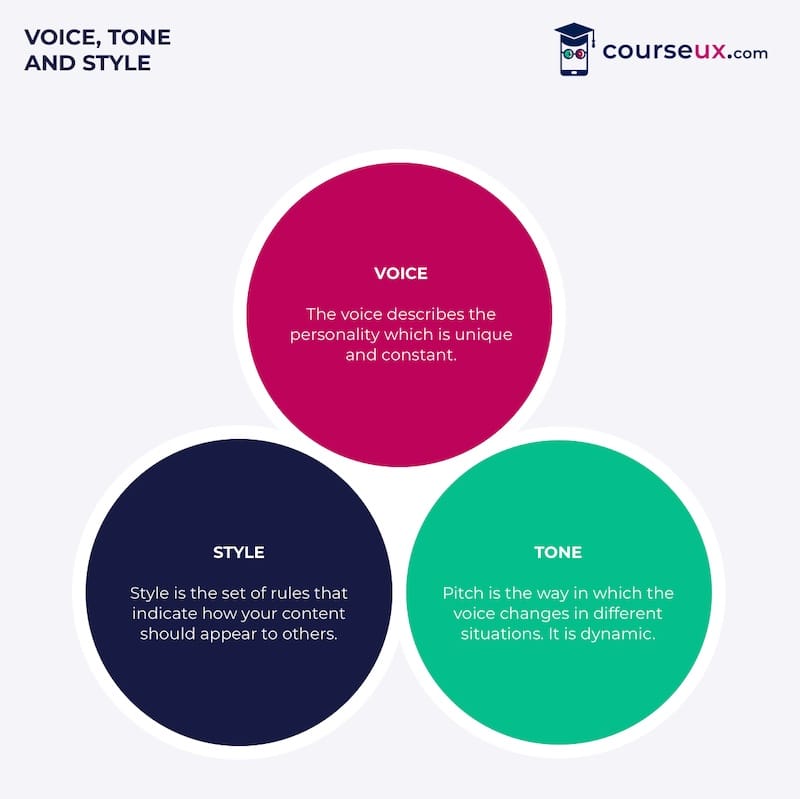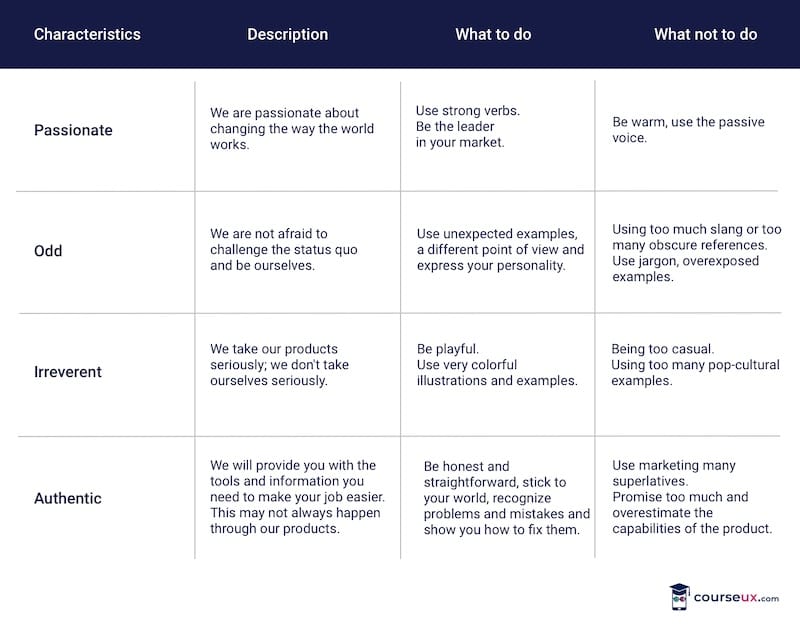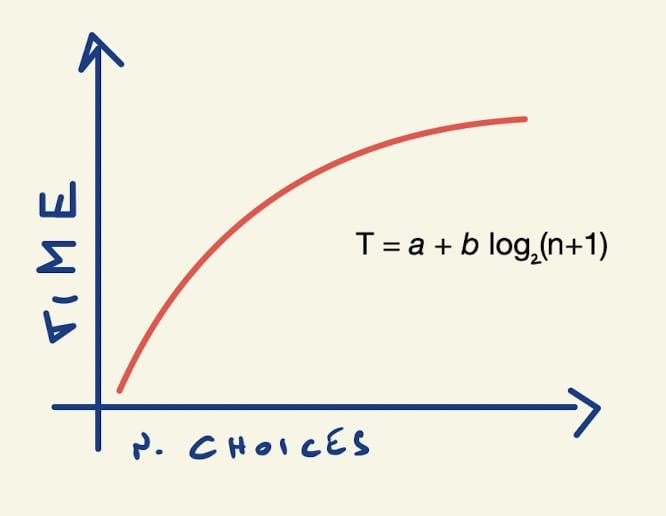Would you like to know what is UX Writing, what its foundations are, and what its future holds?
In this comprehensive guide, we will explore all aspects of UX Writing, including salary and job opportunities for 2024.
Table of Contents
What is UX Writing: Introduction
In a world where user experience is increasingly central to businesses, UX Writing is becoming more and more important. But what does it exactly mean? How does it differ from copywriting? What are the qualities of a skilled UX Writer?
UX Writers write the text you see (or hear) in a user interface (UI).
A user interface is a place where a person (the user) and a computer work together to accomplish something:
- It’s where the user (the person) and the computer (the interface) meet and interact.
- It’s the screens on mobile phones, tablets, and laptops.
- It’s all the boxes you fill in and buttons you click or tap when using any digital product.
- It’s also the voice you hear when talking to Amazon’s Alexa or your Google Assistant.
If you look at a mobile screen without the text of the user interface, it’s quite easy to see how important words are for design.

Like designers, UX Writers must have empathy and communication skills to support users with clear and concise communication.
The fundamental task of UX Writers is to help users understand the why and how in every phase of digital activity, making it simple and uncomplicated.
If an app confuses or lacks proper communication, it could make the digital experience more difficult and leave people confused, frustrated, and less likely to continue using the product.
This frustration leads people to abandon the app or website and turn to their competitors for their purchases.
What is UX Writing
In order to understand what is UX Writing, let’s start by defining it:
UX Writing is the writing of all the texts present in a digital interface, from buttons to labels to error messages.
The goal of UX Writing is to make the user experience as smooth and enjoyable as possible by transforming technological complexity into understandable language.
The foundation of UX Writing is understanding the end user and their needs.
Only by starting from this understanding can you write texts that meet their requirements.
As a UX Writer, it is your responsibility to ensure that the content of the user interface is published on all fronts.
It is helpful to divide the content into three parts: substance, speaker, and style.
- The substance is what you say. It’s the topics covered.
- The speaker (or spokesperson) is who says it. It is the character and personality that bring the voice to life and reinforce the brand, leaving a lasting impression in the minds of customers that sets it apart from competitors.
- Style is how you say it.
These are the mechanics and rules regarding content, such as where to use capital letters, or the conventions for grammar and common vocabulary.
These aspects are known in the UX field as the voice, tone, and style of content.
- The voice is the brand’s personality, which is usually described in adjectives.
- The tone is the emotional quality of the voice.

This is how the content “speaks” in slightly different ways depending on the audience, circumstances, or topic.
Difference between UX Writing and Copywriting
Unlike copywriting, which focuses on user persuasion and promoting a product/service, UX Writing is focused on the user experience and navigation within the digital interface.
If we want, the UX Writer is somewhat of a combination of various roles:
- Technical writer
- Copywriter
- Marketing writer
- Information designer
- Conversation designer
- Digital Copywriter
- Support writer
- Content strategist
The content produced by a UX Writer is called in various ways (following the English standard):
- UX copy
- Interface copy
- UI content
- Product or in-product copy
- Copy (in a general sense and referring to marketing “copywriting”)
In smaller companies or companies with a small design team, it is common for a UX Writer to handle everything: from the marketing website to interface or UX writing, troubleshooting articles (FAQs), and even more (white papers, PR publications, leadership communications, social media posts).
In larger companies, roles are generally more specialized.
What is UX Writing: The Basics
In order to understand what is UX Writing, you need to understand the fundamentals of this profession.
Let’s look at the most important ones:
What is UX Writing: Tone and Voice
Although the terms “voice” and “tone” are often used interchangeably, they are not synonyms.
As seen in our UX Writing Course with Certification, the content of the user interface should ideally have a unique voice with many different tones to express that voice.
For example, think of yourself. You have characteristics that remain relatively constant. You have your own voice and personality. However, depending on who you’re talking to, what you’re talking about, your emotional state, and your audience, you’re likely to adjust your tone of voice to fit the situation best.
The same goes for user interface content. Defining a company’s voice and how and when to adjust its tone of voice can be an excellent exercise to pinpoint what truly stands out about your company.
To identify the characteristics of voice and personality, you can start by:
- Looking at your competitors’ products to see how they sound and find ways in which your company could differentiate itself.
- Seeking input from your team.
- Creating a list of adjectives that describe your company.
- Narrow down this list to four or five that truly capture your company.
After acquiring the right characteristics, you can document them in a chart with a description and do’s and don’ts, like this:

What is UX Writing: User Knowledge
User-centered writing is different from product-centered writing.
If you want to become a UX writer, you should also know what the competition offers and how they communicate it. Ideally, your writing will reinforce the unique value proposition of your product (the most important benefit your product offers to users that they can’t easily find elsewhere). You will also need to understand exactly how the product works so you can teach users the best way to use it.
What is difficult? What is easy?
The more you understand about your product and how it works, the easier your job will be, and the more you will be able to help users.
What is UX Writing: Clarity and Simplicity
To make the user experience as good as possible, texts must always be clear, simple, and understandable.
The fundamental principles of writing in UX Writing are three:
- Clear
- Concise
- Useful
Users need to understand what a product can do for them and how to do it. They need instructions and a reassuring tone.
The product must engage them with clear, concise, and helpful communication. It should answer their questions and guide them through the features.
This communication is the core of UX writing.
We’re not talking about a single screen; the communication of your digital product spans the entire user experience. To write well about any product, you need to know what that product does for your users and how it improves their lives (not just how it works).
What is UX Writing: Understanding the Digital Interface (UI)
To understand what UX writing is, we need to understand what UI components are. The UX writer must have a deep understanding of the digital interface they are writing for.
Only then can they use appropriate language and tone.
First and foremost, it’s important to understand what the “components” of the user interface are.
These are the elements of the user interface such as headers and titles, text input fields and controls, or even buttons, selectors, and other UI elements that allow users to “control” the software.
Users read the headlines, click on buttons, or select from lists, but they don’t think in terms of “components.”
So, what more can we say when we talk about “components”?
Here are some examples:
- Contact forms
- Navigation menus
- Dialog boxes
- Lists
- Notifications
- Tooltips
- Empty states
- Charts
Now let’s take a real example, our website (old version), and identify its components.

In this example, the importance of UX writing for UI components is clear – without effective writing, users may become confused.
What is UX Writing: Testing and Editing
A good practice in UX writing is to continuously test and edit the text until it is perfect.
Testing is also crucial in UX writing.
In fact, it is important to review the work done to better understand the effectiveness of the user interface content.
That’s also why voice, tone, and style guidelines are always being developed and may change based on clients, markets, demographics, and company products or services.
It is a good practice to establish a regular cadence to review the audio-visual content of your digital product:
- Usage: Do people follow the voice, tone, and style guidelines for all content?
- Performance: Are you achieving the desired response or effect?
- Relevance: Is there a need to add, remove, or update anything?
As seen, for example, in the Cloze Test: finding ways to gather customer feedback will help evaluate the performance and relevance of your digital product communication.
Responsibilities of the UX Writer
So far, we have discussed what UX writing is and its techniques. Now let’s look at some of the activities that a UX writer typically performs, in no particular order:
- Collaborates with product teams to find solutions for written and visual narrative design.
- Collaborates with marketing, design, and development teams from the beginning of the project.
- Represents user needs to product managers, designers, and developers.
- Adheres to the team’s development process (such as agile or Kanban), workflows, and delivery methods.
- Uses the same tools as designers and developers.
- Conducts usability and market research and testing.
- Collaborates with the entire team (marketing, product management, leadership) to improve copywriting and communication.
- Works with a content strategist to ensure effectiveness, appropriateness, and proper language governance.
- Writes high-performing text.
- Teach and empowers others to write text.

The UX writer is the specialist when it comes to effectively and concisely communicating with users through the product interface.
What is Microcopy in UX Writing?
Microcopy refers to the collection of short texts found in a digital interface, such as labels or call-to-action buttons.
Why “micro”? Because it’s brief.
An interesting study conducted by the NNG Group discovered that people typically read only 20-28% of the words on a page.
As UX writers, it is our responsibility to address this challenge through a two-fold approach:
- Be as concise as possible.
- Make the text scannable.
Using these techniques helps people quickly find the words they need to complete their tasks.
The more words we pile up on a page, the less likely people are to read them.
To understand what is UX Writing properly, it is important to grasp the role of cognitive load.
The Role of Cognitive Load
In simpler terms, cognitive load refers to the amount of working memory a person uses to process information.
By reducing cognitive load, you make your product easier to use.
We also discussed this in our article on Hick’s Law: The higher the cognitive load, the more difficult it will be for users to complete their tasks.

If a user feels overwhelmed by the cognitive load, they will stop using your product. And this is a usability failure.
Without delving too deep into psychology, the human brain can only hold a small amount of information in working memory and only for a short period of time. Think of working memory as the buffer or notepad of your brain, used to hold information needed for immediate processing.
As soon as the information is processed, the brain discards or moves it to short-term or long-term memory.
The common number of “items” or “chunks” a person can store is usually 6-7 for an average adult.
UX Writer Salary
One of the most frequently asked questions about the world of UX Writing is the average salary for a UX Writer. Like many other professions, salary depends on multiple factors such as experience, location, and industry.
UX Writer Salary in the United States
In the US, an entry-level UX Writer can earn between $80,000 to $120,000 per year, while a Senior UX Writer can reach $160,000.
If you want to become a UX writer, check out our UX Writing Course with Certification.
UX Writer Salary in Europe
Salaries vary from country to country in Europe. For example, in Germany, a Senior UX Writer can earn between €70,000 to €90,000 per year.
UX Writing Jobs in US and Europe
As mentioned, the role of UX Writer is becoming increasingly important for many companies. Let’s see the job opportunities.
UX Writing Jobs in the United States
In the US, the most active companies in the field of UX Writing are software, app development, and eCommerce companies. However, many other companies are starting to show interest in this professional role. Here you can find some job offers for UX writers.
UX Writing Jobs in Europe
If your passion is UX Writing and you’re willing to relocate abroad, job opportunities can increase in countries like Germany, the United Kingdom, and Sweden where the field is more developed. The good news in recent years is that UX writing is also one of the most common remote jobs, so it’s possible to work from home for a foreign company. Here you can find some job offers for UX writers.
What is UX Writing: Conclusion
In conclusion, to understand what is UX Writing, we need to look at the foundations of the design world and user experience.
UX Writers have the task of writing the text found in digital interfaces to provide clear, concise, and helpful communication to users.
Distinguishing itself from copywriting, UX Writing focuses on the user experience and ease of navigation within the interface. The basics of UX Writing include defining tone and voice, understanding the user, clarity, and simplicity in the text, understanding the digital interface, and practicing continuous testing and editing.
UX Writers perform various activities such as collaborating with product teams, representing user needs, and improving copywriting. Additionally, Microcopy, which consists of short texts within the interface, plays a crucial role in effective communication with users.
Ultimately, UX Writing offers interesting and promising job opportunities for the future as companies increasingly focus on user experience for the success of their digital products. If you want to become a UX writer, check out our UX Writing Course with Certification.


